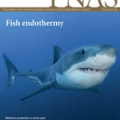We have obtained a "hierarchical regionalization" of 3,107 county-level units of the United States based upon census-recorded 1995-2000 intercounty migration flows. The methodology employed was the two-stage (double-standardization and strong component [directed graph] hierarchical clustering) algorithm described in the 2009 PNAS (106 [26], E66) letter (arXiv:0904.4863). Various features (e. g., cosmopolitan vs. provincial aspects, and indices of isolation) of the regionalization have been previously discussed in arXiv:0907.2393, arXiv:0903.3623 and arXiv:0809.2768. However, due to the lengthy (38-page) nature of the associated dendrogram, the detailed tree structure itself was not readily available for inspection. Here, we do present this (county-searchable) dendrogram--and invite readers to explore it, based on their particular interests/locations. An ordinal scale--rather than the originally-derived cardinal scale of the doubly-standardized values--in which groupings/features were more immediately apparent, was originally presented. Now, we append the cardinal-scale dendrogram.
翻译:根据1995-2000年人口普查记录,我们获得了3 107个美国县级单位的“等级区域化”3 107个,根据1995-2000年人口间移徙流动情况,我们获得了3 107个美国县级单位的“等级区域化”,采用的方法是2009年PNAS(106[26],E66)信函(arXiv:0904.4863)中描述的两阶段算法(双标准化和强成件[定向图 等级组合),但详细的树结构本身无法随时进行检查,这里我们根据读者的特定兴趣/地点,介绍(可查询的)巢底图,请读者探讨区域的各种特点(例如,世界范围对省级的方面,以及孤立指数)。一种或暗的尺度,而不是最初制定的双重标准化值基本尺度,最初显示的是我们现在展示的红外层/红外层。



